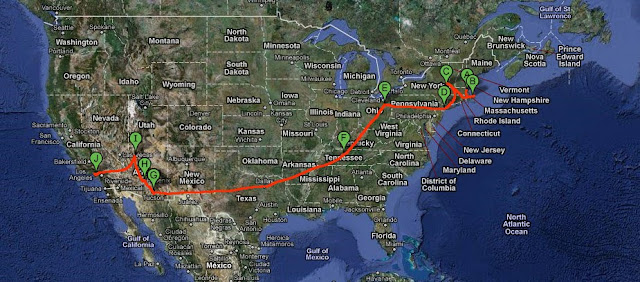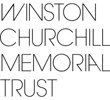When you need to raise money for for your rehab in Nashville, what better way to do it than by hiring the former Grand Ole Oprey House, asking one of America’s finest musicians to play and then charging a hefty ticket price that more than covers all expenses? If the treatment at Cumberland Heights even comes close in competence and professionalism to their fund-raising activities, then people are going to get well, and get well right.
None of my research had prepared me for the size, scope, quality and natural beauty of the programme and facilities I found down beside the Cumberland River in 170 acres of peaceful early autumnal rolling wooded countyside they call a ‘campus’. Again, like IBH in Akron, the favoured architectural style is of single-storey, ranch-like buildings, some with verandas, painted white, which give an atmosphere of openness and accessibility so at odds with so much of urban America’s building brutality. For a sick, stressed and depressed addict, such bucolic tranquility can only give a breathtaking first impression and so provide further impetus to the process of change that is the object of all addiction treatment.
Over the 45 years of its existence Cumberland Heights has developed and grown, and claims to have ‘touched the lives of 200,000 people’, and from my vantage point it is hard to dispute their claim to be one of America’s pre-eminent recovery centres.
The ‘detox’ wing, first stop for many, has large comfortable en-suite rooms that are more hotel then hospital, though missing a television and mobile phone, and a 24-hour fully ‘womanned’ nursing station, with state of the art computer equipment, sits at the hub of this quiet and purposeful wing. Full medical and psychological evaluations and assessments are done here and treatment plans developed for the normally 30-day minimum length of stay for most programmes. There is, however, great flexibility around length of stay as ‘patient’ needs and resources differ, and often it is the insurance company, not the ‘patient’ or CH staff that determines just how much treatment is going to be available. The quality of the treatment at CH is without question of the highest standard, but the determination as to whether someone can fully access that quality is more often than not a question of money.
The breadth and variety of services available at CH is awe inspiring for this English treatment professional brought up within the cultural limitations of nationalised health provision. On the main campus there are 125 beds and over 200 staff to care for the patients. There are residential programmes for adult men, adult women, youths/adolescents from the ages of 13 to 18, and professionals/executives. All of these programmes run on the understanding that a sometimes considerable period of after-care is part of the process of recovery, and the CH ‘outpatient’ treatment follows the intensive residential element with a schedule of up to 6 weeks of 3-hour sessions held four days a week. Additionally, up to a year of of continuing care at weekly aftercare groups to supplement regular attendance at AA/NA meetings is offered.
Cumberland Heights is nothing if not comprehensive in its approach to recovery and it has taken its outpatient services far and wide across central Tennessee to better allow access to former residential patients. They have facilities and groups for both patients and and families running in the towns of Hermitage, Smyrna, Franklin and Jackson, and for those who cannot, or do not want to, return to their former homes they have transitional living houses available for stays of up to four months.
Of all that is on offer at CH, a few pertinent elements resonate strongly with me.
Firstly, that a youth/adolescent taken in for the primary 30-day intensive programme is encouraged to stay for an extended period of a further 90 days, during which time the new knowledge and experiences of recovery are internalised and new cognitive patterns developed to replace the old self-destructive versions. They are also offered enrollment at the state-approved private high school, River Road Academy, where two former state school teachers put them through their academic paces to try to help them catch up with some of the schooling their addiction has ensured they have neglected.
Second, the emphasis on addiction as being a family disease, and therefore in need of family treatment, is clear and direct. Normally in the third week of residential treatment for the patient, the relevant, close family members come to River Road for a four-day intensive programme aimed at improving lines of communication and becoming part of the loved-one’s solution rather than problem. This is followed up in the the outpatient programme which allows for three hour weekly group and/or one-to-one sessions with a counsellor for up to six months.
This belief that family treatment is ‘essential to total recovery’ is taken very seriously at CH, and at other US treatment centres, and it is something that is too often missing or neglected from the treatment plans currently running in the UK.
The third pertinent point that strikes me about CH is that the whole highly successful philosophy of the recovery here is based on the world-wide abstinence model of the 12 Step programme of AA/NA that addresses the physical, mental, emotional and spiritual elements of the disease of addiction. Family reintegration is seen as part of spiritual growth, as is the ego deflating concept of there being a power greater than self; and the emphasis on connectedness with others, and within community, works pretty much the same here in this beautiful corner of Tennessee as it does in the tenements of Tower Hamlets in London.
Finally, and I could go on for a lot longer singing the praises of Cumberland Heights, I come back to the one crucial difference between ‘normal’ residential English recovery and this version of Tennessee recovery: money.
Though prices vary for the various programmes, a back-of-the-fag-packet calculation of a $1000 dollars a day for the 30-day basic ‘product’ is not far off the mark. The small print in the best insurance policies quite often results in the companies paying only 80% of this cost; and how many people have this level of insurance?
One of the most unfathomable mysteries in addiction recovery has always been how to know who is really ready to make and sustain the profound changes required for long-term success. No one ever knows for certain, though the wealthy have the luxury of being able to shift the odds in their favour by paying for what is usually thought of as the best available treatment. Cumberland Heights, despite being a profit-making organisation, is not devoid of charitable instincts, and can make certain ‘arrangements’ with certain clients that can enable access to those less able to pay; but in this unfair world of ours, the decision on who gets the help and who doesn’t is never fair.

The view of the skyline from the 20th floor of the downtown Nashville office block that hosted the Cumberland Heights pre-Lyle Lovett concert cocktail party, threw the outline of the AT&T headquarters into clear relief. It is known locally as the Batman Building due to the curious hooded ‘ears’ that stick up and out from the top floor, and it made me wonder what it is about the citizens of Nashville that made them give this odd looking building a nick-name so connected to the greatest crime fighter of my generation.
Given the $250 a ticket price tag for the concert, ‘Robin’ may have been a more apt choice on this evening, or OT&T, but the great and the good folk of Nashville who came to see, and to be seen, were generous in their support for this very Tennessee recovery centre. The much ‘therapised’ population of the USA think differently to that of the UK, and there was a sense of ownership and pride among the Southern cocktail party crowd that their local treatment centre was putting on such a show. How many of them have had personal reasons to be grateful to Cumberland Heights it is impossible to say, but the estimated $1,000,000 that the whole evening raised through silent auctions, gifts and ticket sales will go a long way towards spreading recovery.
 The view of the skyline from the 20th floor of the downtown Nashville office block that hosted the Cumberland Heights pre-Lyle Lovett concert cocktail party, threw the outline of the AT&T headquarters into clear relief. It is known locally as the Batman Building due to the curious hooded ‘ears’ that stick up and out from the top floor, and it made me wonder what it is about the citizens of Nashville that made them give this odd looking building a nick-name so connected to the greatest crime fighter of my generation.
The view of the skyline from the 20th floor of the downtown Nashville office block that hosted the Cumberland Heights pre-Lyle Lovett concert cocktail party, threw the outline of the AT&T headquarters into clear relief. It is known locally as the Batman Building due to the curious hooded ‘ears’ that stick up and out from the top floor, and it made me wonder what it is about the citizens of Nashville that made them give this odd looking building a nick-name so connected to the greatest crime fighter of my generation.






No comments:
Post a Comment